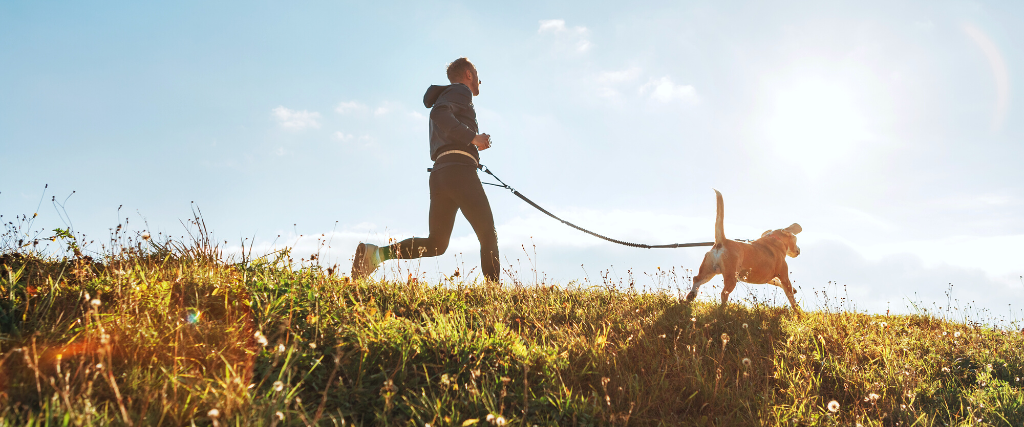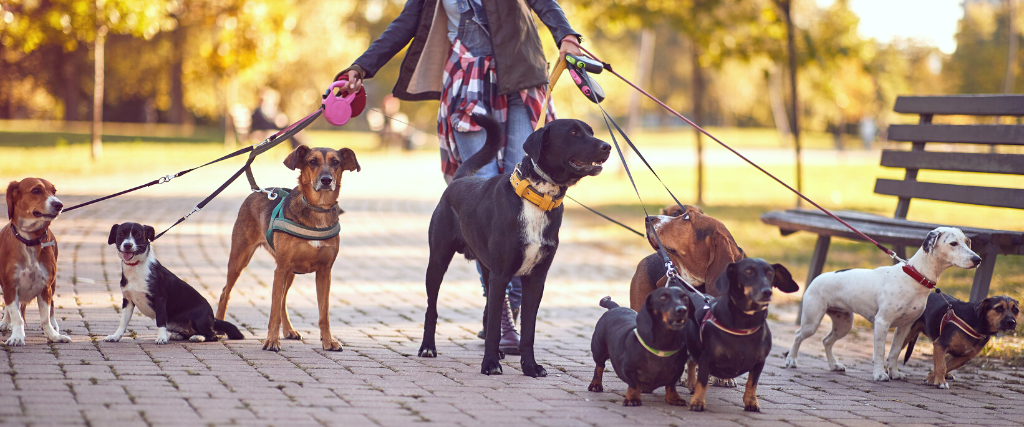October 1-7 is National Walk Your Dog Week, serving as the ideal time to remind dog owners that the health and well-being of their dogs require that they keep them moving. Founded in 2010 by celebrity pet lifestyle expert and animal advocate Colleen Paige, this week brings awareness to the fact that nearly 56 percent of dogs in the U.S. are overweight or obese. In addition, a lack of activity is often the source of behavioral issues, including aggression, destruction, and separation anxiety.
To get your dog moving and reduce their weight, decrease the chances of developing certain diseases, and improve their mental health, follow these tips and turn the task into something you both enjoy.
1. Incorporate Your Dog Walk Into Your Exercise Regimen
Time is tight for everyone these days. Whether work obligations extend beyond the traditional 9-to-5 or your kids' extracurricular activities take up tons of calendar space, we all understand the "not enough hours in the day" mentality. A long walk with your dog is often the first thing taken off the task list when you have a busy day ahead. However, many people will keep their trip to the gym or daily run on the list to prioritize their health. Combine the two and accomplish both at once. Plan a long walking route with your dog, complete with a few hills, and get your exercise alongside your dog. If your dog is young and healthy, you can increase your pace and have them jog alongside you. Be sure to bring water for your dog, especially during the hot summer months.

2.Bring Plenty of Treats
You might find the task of walking your dog to be bothersome if your dog doesn't make it enjoyable for you. Some dogs will bark at every person and dog passing by. Others will tug the entire way and charge after squirrels and birds, while some will take their sweet time and sniff everything in sight. This all means your dog wasn't adequately leash-trained or hasn't had enough exposure to other dogs. Take the time to train your dog during your walks, bringing along ample treats to reward their good behavior when they don't bark, chase, or stop to smell everything. In time, your walks will become something you actually enjoy, and you'll find yourself looking forward to them and time well-spent with your dog.
3. Establish a Routine
Dogs are creatures of habit, and if you take them on a walk at a certain time every day and along the same route, they'll come to anticipate it. This gives your dog something to look forward to, which might curb bad behavior because they understand good behavior will be rewarded with their daily walk. A routine will also help them stay calm during their walk, as the same time and place mean they'll become familiar with people and dogs encountered along the way.
4. Invest in the Right Harness
One of the biggest hindrances to an enjoyable walk with your dog is an inadequate or improper harness. When dogs pull on a leash, and you create tension or pull back, your dog will instinctively pull harder. A front-clip or no-pull harness prevents this, pulling your dog from their front instead of their neck or top of their back. The right harness is also essential for dogs that tend to turn often, explore everything around them, or react quickly to small creatures in yards. Dogs can wiggle out of a harness, so ensure it's properly fit to avoid chasing after your dog during walks.

5. Enlist the Services of a Professional Dog Walker
If spare time is a luxury, the ultimate way to make dog walking easier is to hire a professional dog walker. Hired help will ensure your dog gets the exercise and outdoor time they need, but without you making yourself crazy to fit it into your daily routine. Professional dog walkers will schedule a specific time of day to get your dog and will usually bring along another four-legged client at the same time.
The benefits of a professional dog walker include:
- Establishing a regular walking routine
- Getting your dog out of the house when you're away at work
- Socialization with other dogs if participating in group walks
- Adequate exercise that will lead to a nap, lessening their wait until you get home
During National Walk Your Dog Week, try these tips to make it more enjoyable for you and your dog. The AVMA offers additional tips for walking with your dog. When the experience is easy and rewarding, you'll find yourself taking your dog on more walks, and they'll thank you with good health and a longer life. Contact us to learn more, especially if behavior or medical issues with your dog prevent you from making it part of your daily routine.
